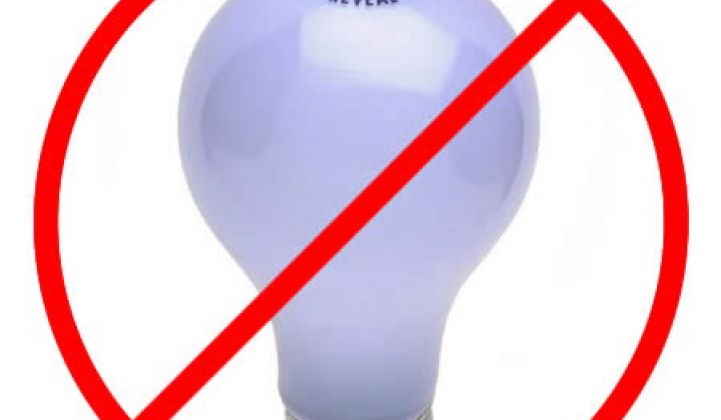This week, 20,000 people will gather at Lightfair in Las Vegas to talk shop, make deals, and network about commercial, industrial, and residential lighting.
It's also marks the regular tradition of pronouncing the incandescent bulb dead and vanquished by solid-state lighting.
That prediction occurs annually and always fails to materialize. We have quotes from VCs predicting the change occurring in 2010 and 2011. LEDs have a long way to go before they surpass incandescents in volume. But it's coming. That's easy to predict. Figuring out when it happens is a bit harder.
The technology is here: solid state lighting has output powers, color quality, features and reliability levels that make them suitable replacements for traditional lighting. LED bulbs even have price points that give reasonable payback times, depending on the application. The U.S. DOE estimates that switching to LED lighting over the next twenty years could save $120 billion in energy costs in the U.S. alone.
Industry pundits, investors, and entrepreneurs have propagated the "flipping of a billion-dollar industry" meme for a while now, but that's not the way most hardware industries shift. The movement away from incandescents is occurring, but it will happen more slowly and more painfully than VCs or entrepreneurs expect it will. Groom Energy and Greentech Media Research predict that the LED enterprise lighting market will grow by 30 percent in 2011 and surpass $1 billion in annual revenue by 2014. The 2010 U.S. market for commercial and industrial LED lighting is sized at $330 million in annual revenue.
What's driven the market in its current phase is not general illumination but more specialized consumer products such as mobile phones and flat-screen TVs. Soon it will be general illumination.
But 150 years of incandescent domination has formed a very entrenched incumbency with cheap pricing and difficult-to-breach sales channels.
Here are some announcements from the incumbents and the startups that are flipping a $100 billion industry to solid state sometime soon:
New Lighting Products
GE Lighting (NYSE: GE) is showing a 100-watt incandescent light bulb replacement using 27 watts of input power and putting out 1,600 lumens in a standard A-19 bulb shape. This GE bulb uses cooling technology from Nuventix. This bulb will hit the shelves in 2013, according to GE, at an as-yet-undisclosed price (although $40 to $50 sounds right). GE's existing 60-watt replacement bulb (which is 13 watts) has a retail price of $40. The 100-watt replacement claims a 3000K color temperature, a 25,000-hour life rating (22.8 years at three hours per day), is dimmable, and puts out 60 lumens per watt.
Philips is announcing a dimmable 100-watt LED equivalent lamp using 23 watts to deliver 1700 lumens that will be ready for commercial shipments late this year. Pricing was not disclosed.
Topanga Technologies has developed a plasma lighting technology for high brightness commercial applications which looks to replace high intensity discharge (HID) sources at half the energy usage. Topanga is introducing a light source intended to replace 1,000-watt HID sources.
Lumenpulse is introducing a technology that allows digital control of LED lighting over existing AC power lines, eliminating the need for additional wiring and compatible with common dimmer and control standards.
Intematix, a maker of phosphors for LED lighting and displays, is introducing a "remote phosphor" product that separates the LED light source from the phosphor. Here's a video explaining the design.
Soraa's MR16-style lamp has a CRI of 95 and an R9 of 90 and uses the company's GaN-on-GaN-based LED lighting technology. It is designed to replace standard 40- to 50-watt MR16 halogen lamps.
New Funding for Lighting
SunSun Lighting, a China-based builder of low-cost LED lighting, closed a Round B from GSR Ventures and Oak Investment Partners.
TerraLUX closed an $18.3 million Round B led by Generation Investment Management with Emerald Technology Ventures and Access Venture Partners. TerraLUX builds LED light engines for OEM and retrofit applications to replace light sources in commercial and residential applications, as well as flashlights and lighting tools.
More details from Lightfair over the course of the week.



